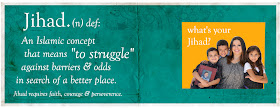“We need to go out to the outskirts
where there is suffering, bloodshed, blindness that longs for sight, and
prisoners in thrall to many evil masters,” he said at a
mass in St Peter’s Basilica. “It is not in soul-searching or constant
introspection that we encounter the Lord.”
While popes have for centuries washed the feet of the faithful on the day before Good Friday, never before had a pontiff washed the feet of a woman. That one of the female inmates at the prison in Rome was also a Serbian Muslim. Pope Francis washed the feet of 12 inmates aged 14 to 21, among them the two women, the second of whom was an Italian Catholic.
While popes have for centuries washed the feet of the faithful on the day before Good Friday, never before had a pontiff washed the feet of a woman. That one of the female inmates at the prison in Rome was also a Serbian Muslim. Pope Francis washed the feet of 12 inmates aged 14 to 21, among them the two women, the second of whom was an Italian Catholic.
“There is no
better way to show his service for the smallest, for the least fortunate,” said Gaetano
Greco, a local chaplain.
The pontiff, who has largely disregarded
protocol since his election earlier this month, urged his fellow clerics before
the ceremony to prioritise the poor.
“We need to
go out to the outskirts where there is suffering, bloodshed, blindness that
longs for sight, and prisoners in thrall to many evil masters,” he said at a
mass in St Peter’s Basilica. “It is not in soul-searching or constant
introspection that we encounter the Lord.”
Francis, the first leader of the
Catholic Church from Latin America, led a mass with a mixed group of young
offenders at the Casal del Marmo prison outside of Rome.
The 76-year-old, who was archbishop of Buenos Aires until chosen as
pope, has already made a name for himself as a champion of the disadvantaged.
In his homeland of Argentina he was known for his strong social advocacy,
working in slums and shunning the lavish lifestyle adopted by some senior
clerics. He lived in a small flat near the cathedral, flew to the Rome conclave
in economy class, and chose to travel with his fellow cardinals by minibus
rather than in the papal limousine.












